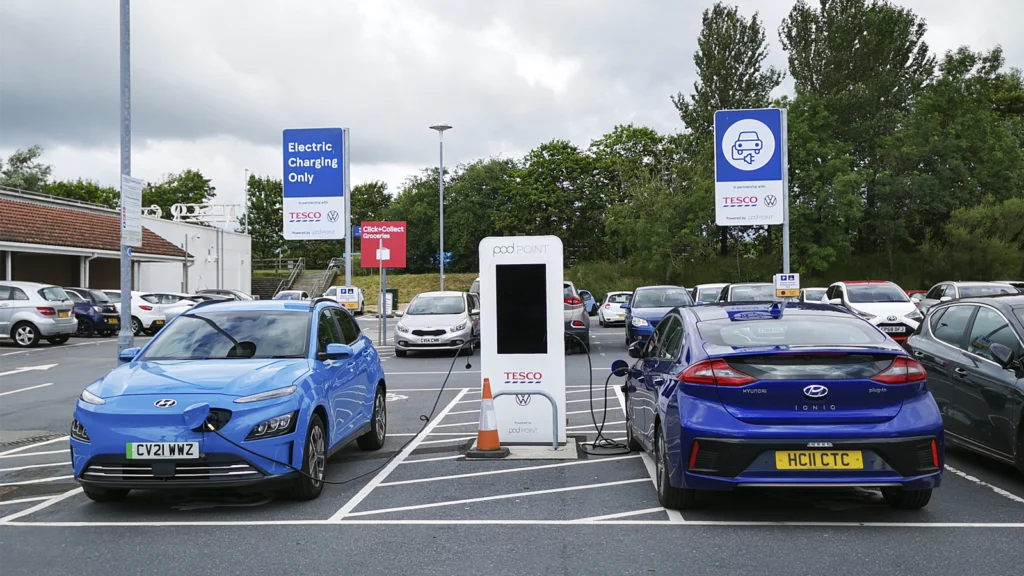BEVs alone won’t cut it: Why hydrogen is key to a balanced zero-emission UK

As the UK accelerates toward its zero-emission targets, the rise in Battery Electric Vehicles (BEVs) reveals underlying infrastructure and adoption challenges that hydrogen technology could help address.
September 2024 marked a record high for BEV registrations in the UK, but the growth came at a steep cost: unprecedented manufacturer discounting and reliance on fleet sales.
Despite aggressive incentives, BEV market share remains below mandated targets, and consumer confidence in the technology is far from assured.
This situation offers a timely opportunity to consider hydrogen-powered vehicles as part of a broader, more sustainable zero-emission strategy – one that addresses unique consumer and logistical needs that BEVs alone may not be able to satisfy.
Rising BEV sales but mounting challenges
While BEV registrations saw an increase of 24.4% in September, the bulk of this growth was driven by massive discounting and fleet sales.
In fact, private demand for BEVs remains lukewarm, with a modest 3.6% month-on-month increase in September. However, by October, the overall year-to-date figure declined sharply, reaching a total drop of 17.4%.
Many private buyers hesitate to switch to BEVs, citing concerns over high upfront costs, fluctuating incentives, and the inconsistency of the UK’s charging infrastructure.
44% of UK homes lack the infrastructure for at-home charging, without dedicated driveways or garages, leaving many drivers to rely on the costly and often unreliable public network.
These concerns point to an unsustainable model of BEV adoption, with manufacturers reportedly spending up to £2 billion in discounts this year to stimulate demand – a cost that raises questions about the long-term viability of BEV-led electrification.
Is hydrogen a practical alternative for a balanced zero-emission future?
Hydrogen fuel cell vehicles (FCEVs) and hydrogen internal combustion vehicles (H2-ICE) present a compelling alternative, especially in situations where BEV infrastructure falls short.
Unlike BEVs, which require extensive charging networks and prolonged charging times, hydrogen vehicles can be refueled in a matter of minutes at strategically placed refueling stations.
This characteristic makes hydrogen ideal for high-usage sectors like logistics, public transport, and long-distance travel, where downtime and range are critical considerations.
One of hydrogen’s unique advantages is its potential to be integrated into the UK’s existing fuel infrastructure.
Almost all petrol and diesel stations can be retrofitted to accommodate hydrogen refueling, offering a path to scale up hydrogen availability as demand increases.
Key industry players are already investing in hydrogen stations along major routes, especially in regions underserved by EV chargers.
This planned expansion positions hydrogen as a versatile and accessible fuel source that complements BEVs in a diversified zero-emission ecosystem.
Addressing the broader infrastructure needs of the UK
The UK’s path to zero emissions likely requires a multi-technology approach that meets a variety of usage needs and geographic constraints.
For urban drivers with short commutes, BEVs may offer a workable solution.
But for drivers in rural areas, those with high-energy demands, or residents without home charging capabilities, hydrogen vehicles provide an essential zero emissions alternative.
Investing in hydrogen infrastructure can alleviate the limitations of BEV charging networks, especially in areas with limited access to public chargers.
Hydrogen’s rapid refueling capability also sidesteps issues like high electricity demand during peak hours, a concern as BEV adoption strains the power grid.
A balanced approach – where hydrogen and electric solutions coexist – could provide a resilient path forward that adapts to the diverse needs of UK drivers.
A call for investment in hydrogen infrastructure
While BEVs are currently leading the charge in the zero-emission transition, it’s clear that this growth has relied heavily on discounting and fleet sales, which is unsustainable in the long term.
Hydrogen has a critical role to play in making the transition more inclusive and practical.
A dual-path approach that includes hydrogen infrastructure investments could accelerate the UK’s progress towards zero emissions without placing unsustainable pressure on any single technology.
By leveraging both hydrogen and electric solutions, the UK can work toward a zero-emission future that leaves no one behind.
Hydrogen infrastructure, particularly when retrofitted into existing fuel stations, has the potential to bridge gaps in the current system, offering a pathway that balances practicality with sustainability.
For policymakers, energy providers, and automotive manufacturers, now is the time to embrace this balanced approach, building a truly resilient transportation ecosystem for generations to come.









